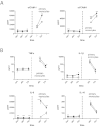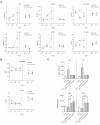Monocyte-induced recovery of inflammation-associated hepatocellular dysfunction in a biochip-based human liver model
- PMID: 26902749
- PMCID: PMC4763209
- DOI: 10.1038/srep21868
Monocyte-induced recovery of inflammation-associated hepatocellular dysfunction in a biochip-based human liver model
Erratum in
-
Corrigendum: Monocyte-induced recovery of inflammation-associated hepatocellular dysfunction in a biochip-based human liver model.Sci Rep. 2018 May 14;8:46988. doi: 10.1038/srep46988. Sci Rep. 2018. PMID: 29756606 Free PMC article.
Abstract
Liver dysfunction is an early event in sepsis-related multi-organ failure. We here report the establishment and characterization of a microfluidically supported in vitro organoid model of the human liver sinusoid. The liver organoid is composed of vascular and hepatocyte cell layers integrating non-parenchymal cells closely reflecting tissue architecture and enables physiological cross-communication in a bio-inspired fashion. Inflammation-associated liver dysfunction was mimicked by stimulation with various agonists of toll-like receptors. TLR-stimulation induced the release of pro- and anti-inflammatory cytokines and diminished expression of endothelial VE-cadherin, hepatic MRP-2 transporter and apolipoprotein B (ApoB), resulting in an inflammation-related endothelial barrier disruption and hepatocellular dysfunction in the liver organoid. However, interaction of the liver organoid with human monocytes attenuated inflammation-related cell responses and restored MRP-2 transporter activity, ApoB expression and albumin/urea production. The cellular events observed in the liver organoid closely resembled pathophysiological responses in the well-established sepsis model of peritoneal contamination and infection (PCI) in mice and clinical observations in human sepsis. We therefore conclude that this human liver organoid model is a valuable tool to investigate sepsis-related liver dysfunction and subsequent immune cell-related tissue repair/remodeling processes.
Figures







References
Publication types
MeSH terms
Substances
LinkOut - more resources
Full Text Sources
Other Literature Sources
Miscellaneous

